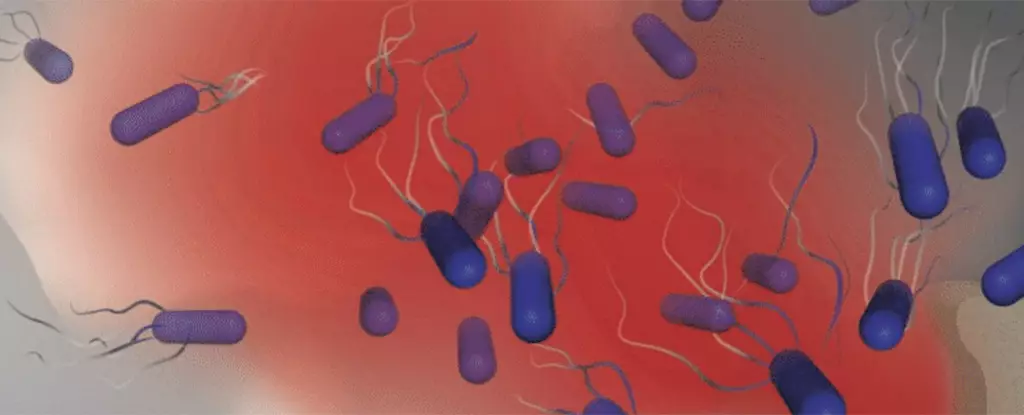

A recent study conducted by researchers from Washington State University and the University of Oregon has brought to light a phenomenon termed ‘bacterial vampirism’. This intriguing discovery reveals the unique ability of certain types of bacteria to be drawn to human blood. These bacteria are particularly enticed by serum, the liquid component of our blood, due to the rich nutrients and energy it provides.
The implications of this bacterial attraction to human blood can be dire, especially for individuals suffering from irritable bowel disease (IBD). In cases of intestinal bleeding associated with IBD, gut bacteria may find a pathway into the bloodstream, potentially leading to fatal infections. Microbiologist Arden Baylink from Washington State University emphasizes the severity of bloodstream infections caused by bacteria, stating, “Bacteria infecting the bloodstream can be lethal.”
Through the use of a specialized device for injecting minute quantities of fluid and a high-powered microscope, the researchers observed the interaction between bacteria and blood. The study focused on three strains of bacteria – Salmonella enterica, Escherichia coli, and Citrobacter koseri – known to cause fatal infections. These bacteria were found to exhibit a strong attraction towards human serum. The researchers also identified specific biological interactions, highlighting the role of the amino acid serine as a chemical that bacteria can detect, seek out, and consume through distinct protein receptors.
What is particularly alarming is the swiftness of the bacterial response to human blood. In the experiments conducted, it took less than a minute for the bacteria to detect the presence of blood and move towards it. This rapid and robust attraction to serum poses a significant concern, especially in cases where gastrointestinal bleeding and sepsis are involved, such as in individuals with IBD.
Despite the alarming nature of these findings, they also offer a glimmer of hope in terms of potential treatment avenues. Understanding how bacteria sense and utilize serum in blood could pave the way for the development of novel therapeutic strategies. Immunologist Siena Glenn, also from Washington State University, proposes that by deciphering the mechanisms behind bacterial detection of blood sources, researchers may be able to create drugs that inhibit this capability.
The revelation of bacterial vampirism sheds light on a previously unknown facet of bacterial behavior and interaction with human blood. By unraveling the intricacies of this phenomenon, researchers aim to enhance our understanding of bloodstream infections and potentially develop life-saving treatments. The journey into the world of bacterial vampirism may seem ominous, but it also holds the promise of improved healthcare outcomes and a deeper understanding of microbial pathogens.
When we delve into the cataclysmic events that led to the destruction of Pompeii almost…
The field of electronics has long been dominated by semiconductors, which utilize the movement of…
When you observe the mesmerizing swirl created by pouring cream into a cup of coffee,…
Recent groundbreaking research from Nagoya University has unearthed significant data regarding the Small Magellanic Cloud…
In recent years, the utilization of computed tomography (CT) scans in the United States has…
Recent studies have shed light on an intriguing aspect of our celestial companion, the Moon:…
This website uses cookies.